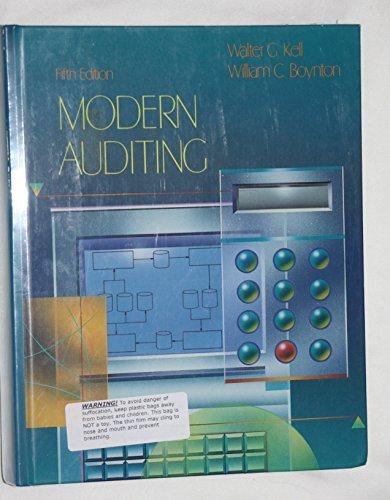In planning the audit of accounts receivable, you decide to select accounts for confirmation using a variables
Question:
In planning the audit of accounts receivable, you decide to select accounts for confirmation using a variables estimation sampling plan. A major reason for your decision is the advantage of being able to measure and control the risks involved. You recall that auditing literature describes ultimate risk as a combination of two separate risks: (1) that material errors will occur in the accounting process by which the financial statements are developed, and (2) that any material errors that occur will not be detected in the auditor's examination.
Required:
a. How does this description of risk relate to the following expression in the context of the variables sampling application described above:![]()
b. What guidelines are available for determining how much the ultimate risk should be?
c. If internal controls are 70 percent effective in preventing material errors and you want the ultimate risk to be no greater than 5 percent. how effective must the auditor's substantive tests be?
d. Assuming ultimate risk is to be held constant at 5 percent, the effectiveness of internal control is 70 percent, and the effectiveness of other audit procedures is 10 percent; what beta risk can the auditor accept for variables sampling plan for confirmations?
e. Referring again to the equation in a above, is \(\beta\) the complement of reliability for the variables estimation sampling plan for confirmations? Explain.
Step by Step Answer:

Modern Auditing
ISBN: 9780471542834
5th Edition
Authors: Walter Gerry Kell, William C. Boynton, Richard E. Ziegler





